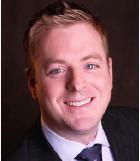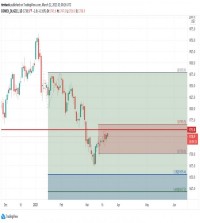|
Mark Melin: Newedge research notes are highly regarded as a source for informed managed futures discussion. When you first considered developing the notes, what is the industry need you saw? Ryan Duncan: The research notes are all about answering questions institutional investors were asking. Newedge figured it was in an position in the research space to objectively conduct the research and come up with answers not only to those investors who asked the question, but also those who had the questions but did not ask them. Some of the earlier work - understanding drawdowns, understanding daily performance data - came directly from clients. Going forward the research notes arm Newedge salespeople to engage in interesting dialogue with sophisticated investors. The reports are widely read by CTAs, commodity pool managers, global macro managers, fund of fund managers and most recently the end investor. MM: How do the research notes answer issues in the institutional community relative to their acceptance of managed futures and the investment category penetration into pension funds, sovereign wealth funds and family office portfolios? RD: I think the managed futures space has always been a tough one for institutional investors to get their head around. Providing insight into problems and issues in the space, as well as performance in the space, has helped investors get more comfortable with managed futures in general. 
Ryan Duncan is Co-Head of Newedge's Advisory Group. He has been with the firm since 2002.
MM: Why do institutional investors have such a difficult time getting their heads around managed futures? RD: The strategy itself is somewhat black box. It isn't like other hedge fund strategies where there is more of an economic rationale for why they perform or under perform. Nothing like (an easy to explain economic rationale for performance) exists for managed futures. People will say broadly speaking in the trend following space, for instance, that either trends exist or they don't exist, but no one really knows why market price trends are created or why they persist. Some groups have done a limited amount of research in the area, but I don't think there is a seminal piece explaining why trend following works. MM: It reverts back to the old David Harding saying, "We don't know why or how trends are created or exist, but we know they have always been a feature of market environments at some point." RD: You deal with the market environments managed futures has experienced over the past two or three years, with poor performance broadly for the space, and many groups buy into negative correlation and liquidity, however, going forward they start to lose patience with lack of returns with no concrete idea of when performance is going to return. RD: At the end of the day Newedge is a brokerage firm. For us to go into an institutional investor and simply talk about Newedge's brokerage capabilities isn't going to get us into a door, it won't get us those meetings. When we enter a meeting with valuable research to help them understand the space, it creates a different sort of dialogue and allows us to talk about the space in general and to talk about how specific managers fit within the space. Through the notes and events, our team is able to engage in conversations with groups who we wouldn't likely engage with if we didn't have innovative research or the industry knowledgebase. MM: What is the most influential strategy note Newedge has published? RD: The note that gets the most play for us is Superstars vs Teamwork. It was first published in 2007 and we still have people reference that note in conversations. The note came out of institutions and investors asking for appropriate manager introductions. During 2005 and 2006 many of the inquires we were fielding were about managers who had the best recent performance. What we did in this strategy note is put together a framework for thinking about the best way to construct a portfolio. The note asks the question: Should manager selection be about the best recent returns performance or should it be about their correlation to other managers. It was about selecting individual managers who on the whole didn't have the best recent returns performance or high Sharpe Ratio, but when you created the appropriate portfolio construction with proper correlations the combination (teamwork) had the best Sharpe Ratio. Many of the managers selected for the teamwork portfolio were niche managers who you probably wouldn't see in a lot of large institutional portfolios. In fact, some of the managers had capacity constraints due to their trading specialty. MM: The CTA sustainability study of the BarclayHedge "Graveyard database" (CTAs who stopped reporting) indicated that higher than average compounded annual return and Sharpe Ratio were the worst indicators of future sustainability. What are some of the methods Newedge uses to evaluate managed futures programs? RD: What we do first is understand what the investor is looking for. Are they interested in a fund vehicle? If so do they want an offshore fund or onshore? Do they want to invest in a direct segregated managed account? What is the allocation level? What strategies are they looking for? Do they have any constraints as far as length of track record or assets under management? We look at it from the investors side and pinpoint what they are looking for, then we introduce managers that follow those criteria. On the manager side we talk to emerging managers to some of the largest names in the industry. Then we help the investor understand who the manager is, their background, and what their investment process entails and how they manage risk. Knowing both sides of the equation we have a good reputation with the manager and the institutional investors in the space. We make targeted introductions; we have a reputation with our investors to provide introductions with quality managers are most relevant towards their needs. MM: In regards to the recent strategy note, The Capacity of the Managed Futures Industry, how did this study come about? RD: The most difficult question we would get consistently regarding managed futures industry capacity limits over the past few years, and it was always tough to answer. We always pushed it aside, saying open interest in the futures industry is fairly elastic, so it is tough to say what the capacity is. In order to answer that question you need to make a number of assumptions. For some time I don't think our team was comfortable in answering the questions. Then Ewan Kirk from Cantab Capital Partners approached us because he was getting the question asked so often, he was being pushed up against a wall. He challenged us to look at the trend indicator model, which was a simple model, and said this can be used as a framework to answer the capacity question. Galen Burghardt (head of Newedge research) struggled with starting a research document that didn't have a well defined answer. For instance, it was unlikely that researchers could pinpoint an exact capacity number, such as $450 billion under management. This wasn't the target of the note. Rather, the target of the research note was to provide a framework for providing an answer. If you wanted to answer that question, how would one go about doing this; what are the assumptions that are made? MM: What is the primary message of the research note? RD: On page two the three points that mitigate concern regarding strategy constraints for us are: 1) the role futures play in the markets they represent. For instance in equity and interest rate markets, the underlying markets are very deep. The only issue one might have is in some of the commodity markets where the larger trend followers don't make a huge allocation on a percentage basis to these markets anyway. When we look at a lot of people who make the causal relationship "CTAs have attracted a significant amount of assets under management over the past several years, performance has been lackluster, therefore trend following is dead, CTAs have reached their own capacity limits." We don't see a relationship (between increase in assets under management and lackluster recent performance). The strategy note we put out early this year regarding excess returns in the CTA space addresses that point. Finally I think if you look at the increase in futures market open interest and volume over the past decade we see no reason why that can't persist. |
|
This article was published in Opalesque Futures Intelligence.
|





 RSS
RSS









